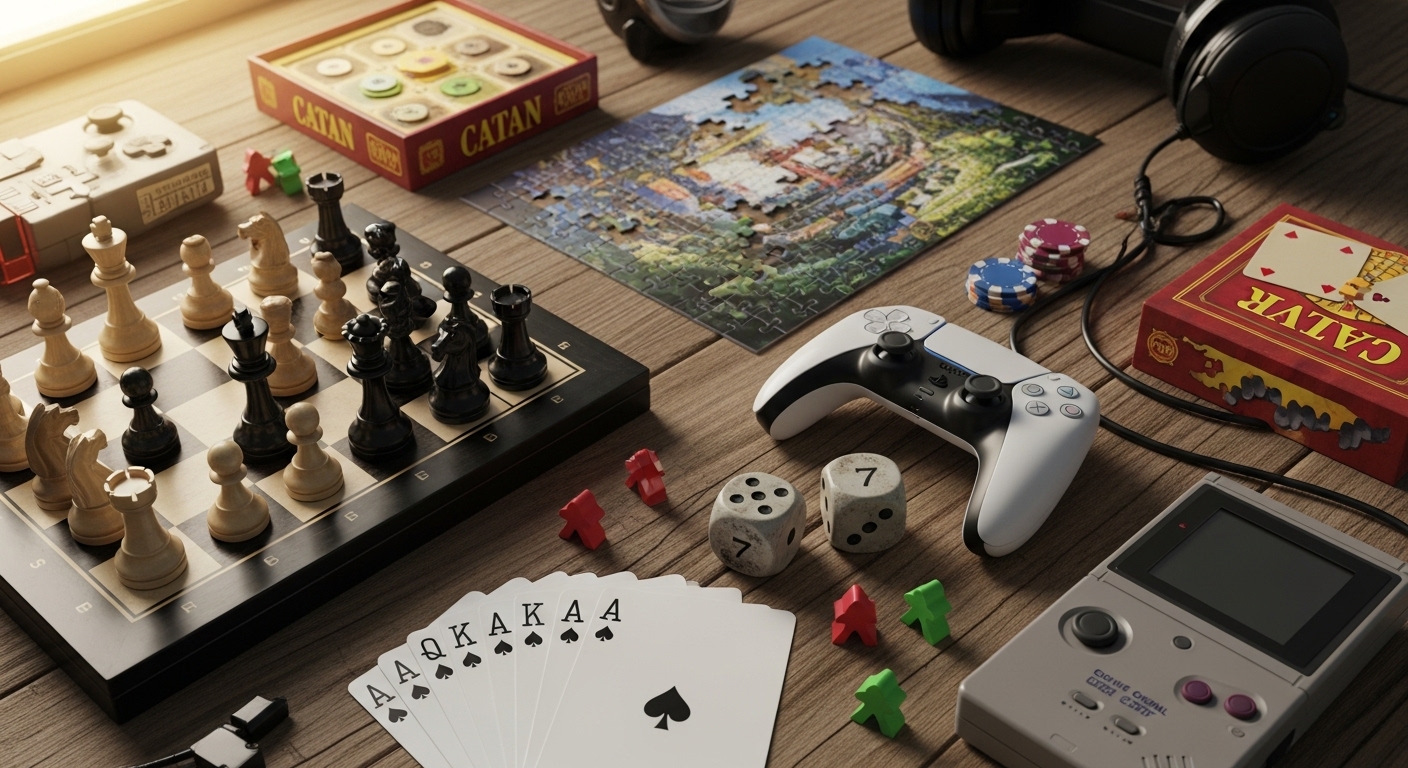Video games have always been about more than just pixels and polygons. At their heart lies something deeper—the mechanics that make them engaging, challenging, and unforgettable. Game mechanics are the building blocks that define how players interact with a game world, influencing everything from movement and combat to storytelling and emotion. Over the decades, developers have constantly pushed the limits of creativity, experimenting with systems that redefine what games can be. Innovation in game mechanics doesn’t just entertain; it transforms the way we think about interactivity, strategy, and immersion. This blog explores the most innovative game mechanics ever created, how they shaped the gaming industry, and why they continue to inspire both players and developers around the world.
The Evolution of Game Mechanics
In the early days of gaming, mechanics were simple: move, jump, shoot, and score points. Yet even in those primitive beginnings, innovation was evident. Games like Pong introduced competitive reflex-based interaction, while Space Invaders created tension through increasing difficulty. As technology advanced, so did the complexity of mechanics. Developers began blending genres, adding layers of strategy, exploration, and narrative.
Today, mechanics are not just about function; they are about feeling. A well-designed mechanic can make players feel fear, triumph, empathy, or curiosity. They are the invisible language that connects player intention with game response. Over time, mechanics have evolved from simple inputs to intricate systems that simulate physics, morality, and even emotion, proving that creativity is the true engine of gaming progress.
Sandbox Freedom: Creating Worlds Without Limits
One of the most significant innovations in game design came with sandbox mechanics. Instead of guiding players through linear objectives, sandbox games offer freedom—allowing them to explore, build, and shape the world as they see fit. Titles like Minecraft redefined this approach by giving players tools to create entire universes out of simple blocks. This mechanic fostered creativity, transforming players into designers of their own experiences.
Sandbox mechanics also changed how developers approached storytelling. Rather than dictating every event, they built systems that let stories emerge naturally from player choices. This level of autonomy encouraged replayability and personal expression, blurring the line between creator and consumer. The open-ended nature of sandbox mechanics has since become a cornerstone of modern gaming, influencing everything from survival titles to simulation and adventure genres.
Dynamic Storytelling: When Choices Matter
Before branching narratives became common, most games followed strict scripts. Players completed tasks, watched cutscenes, and moved forward. The innovation came when developers decided to give players control over the narrative itself. Dynamic storytelling allows players’ choices to shape the outcome of the game, creating a sense of agency and emotional investment.
Games like Mass Effect and The Witcher 3 mastered this mechanic, where every decision carries weight. Whether saving a character, betraying an ally, or determining the fate of a civilization, these choices ripple throughout the story, altering dialogue, missions, and endings. This approach not only enhances replayability but also makes each playthrough unique.
Dynamic storytelling taught developers that emotional impact doesn’t come solely from scripted moments—it comes from giving players responsibility for what happens next. The feeling of consequence transforms gaming into an interactive narrative medium unlike any other.
The Bullet Time Revolution: Slowing Down Chaos
Few mechanics have had as dramatic an effect on gameplay as “bullet time.” This innovation, popularized by Max Payne, allowed players to slow down time during combat, giving them an almost cinematic edge over enemies. Inspired by action movies, bullet time created moments of stylish intensity that made players feel like unstoppable heroes.
Beyond its visual flair, the mechanic introduced new layers of strategy. Players could dodge bullets, plan attacks, and execute perfect shots with precision. It wasn’t just about reaction—it was about control in chaos. Bullet time has since been adopted and refined across countless genres, from shooters to action RPGs, becoming a symbol of how simple mechanical tweaks can redefine an entire experience.
Portal Mechanics: Rethinking Space and Perception
Innovation often comes from challenging assumptions, and few games did that better than Portal. Its core mechanic—creating linked portals between two points—transformed spatial reasoning into a gameplay puzzle. Instead of fighting enemies or solving typical challenges, players had to think with portals, manipulating gravity and perspective to progress.
This mechanic forced players to reimagine how they interacted with three-dimensional space. It demonstrated that innovation doesn’t require complex systems or massive worlds; sometimes, one brilliant idea can be enough to make a masterpiece. The portal mechanic remains one of the most celebrated examples of creative problem-solving in game design, inspiring countless successors and teaching developers the power of simplicity.
The Nemesis System: Personalized Enemies and Stories
One of the most groundbreaking mechanics of the last decade came from Middle-earth: Shadow of Mordor with its Nemesis System. This feature created a dynamic hierarchy of enemies who remembered the player’s actions. If a player defeated or escaped an enemy, that character might return later, stronger and seeking revenge.
This innovation introduced personalization into combat systems. Every enemy encounter could tell its own story, creating emergent narratives that made the world feel alive. The Nemesis System blurred the line between scripted design and procedural generation, giving each player a unique journey filled with evolving rivalries and triumphs.
Its impact extended beyond one game, influencing discussions about adaptive AI, procedural storytelling, and emotional attachment to non-playable characters. Though rarely replicated, the Nemesis System remains a benchmark for dynamic world-building.
Time Loops and Repetition as Design Tools
Time manipulation has always fascinated game designers, but few mechanics have used it as elegantly as time loops. Games like The Legend of Zelda: Majora’s Mask introduced the idea of reliving the same days repeatedly, with each loop providing new insights and opportunities.
This mechanic challenges players to think strategically—what can be changed, what must stay the same, and how knowledge from past failures can be used to progress. It’s both frustrating and rewarding, turning repetition into mastery.
Later games such as Outer Wilds expanded this concept, using time loops as narrative tools that reveal hidden truths through discovery rather than instruction. By transforming time itself into a mechanic, these games explore themes of fate, knowledge, and persistence in profoundly creative ways.
Physics-Based Gameplay: Turning Realism into Fun
The incorporation of realistic physics has led to some of the most entertaining and unpredictable mechanics in gaming. When developers began simulating gravity, momentum, and material properties, games became playgrounds for experimentation.
Titles like Half-Life 2 introduced physics puzzles that required creative thinking rather than brute force. Players could use the environment as a weapon, move objects to create paths, or use the gravity gun to manipulate surroundings. Physics-based mechanics opened a world of emergent gameplay where outcomes weren’t predetermined but generated by the player’s actions.
Modern games continue to use physics creatively, from ragdoll animations in action titles to realistic vehicle simulations and destructible environments. These mechanics make the world feel tangible, bridging the gap between virtual and physical reality.
Morality Systems and Player Ethics
As games matured, developers began exploring human morality within their systems. Morality mechanics let players make moral or immoral choices, often affecting storylines, character relationships, and endings. Games like Fable and Mass Effect pioneered systems where good and evil actions changed not just the narrative but also the world’s perception of the player.
These mechanics force players to reflect on their values. Should you save one life at the cost of many? Should you forgive or seek revenge? By transforming ethical decisions into gameplay, developers turned games into mirrors of human psychology.
Morality systems also paved the way for more nuanced design, where choices aren’t black and white but shades of gray. This complexity adds depth and replayability, encouraging players to explore multiple perspectives.
Emergent Gameplay: When Players Create the Story
Emergent gameplay is one of the purest forms of innovation. Instead of scripted experiences, developers create systems that interact in unpredictable ways, allowing players to discover new strategies or outcomes on their own.
Games like The Elder Scrolls V: Skyrim thrive on this mechanic. Players might stumble upon a hidden quest, accidentally anger a faction, or find creative ways to solve problems. These unscripted moments often become the most memorable parts of the experience.
Emergent gameplay celebrates player creativity and curiosity. It rewards experimentation and unpredictability, proving that the best stories are sometimes the ones that developers never planned.
Asymmetrical Multiplayer: Unequal but Balanced
Traditional multiplayer games often rely on symmetry, where all players have equal abilities and roles. Asymmetrical multiplayer broke that convention, giving players vastly different experiences within the same match. Games like Dead by Daylight and Evolve made one player the hunter and others the survivors, each with unique abilities and objectives.
This mechanic created tension, strategy, and unpredictability. Balancing unequal powers required masterful design, but when done right, it made for thrilling and replayable gameplay. Asymmetry has since spread to other genres, from shooters to cooperative puzzle games, emphasizing teamwork, creativity, and adaptability.
Adaptive Difficulty: Games That Learn from You
One of the subtler yet powerful innovations in game mechanics is adaptive difficulty. Instead of static challenge levels, some games monitor player performance and adjust accordingly. This ensures that newcomers aren’t overwhelmed, while veterans still feel challenged.
Games like Resident Evil 4 and Left 4 Dead used this mechanic to great effect, making each encounter feel dynamic. Enemies became smarter, supplies scarcer, or attacks more aggressive based on how well players performed.
Adaptive difficulty highlights how game design can merge psychology and technology, creating personalized experiences that remain engaging for everyone.
Procedural Generation: Endless Worlds from Code
Procedural generation allows developers to create vast, unpredictable worlds through algorithms instead of manual design. This mechanic made games like No Man’s Sky and Spelunky possible, where no two experiences are ever the same.
By using mathematical formulas to generate terrain, dungeons, and events, developers can offer endless replayability without crafting each detail by hand. This mechanic has revolutionized genres like roguelikes and survival games, ensuring that players always face new challenges and discoveries.
Procedural generation embodies the essence of innovation—using technology to create infinite creativity.
The Power of Subtle Mechanics
Not all innovation is loud or obvious. Some of the most impactful mechanics are subtle touches that change how players feel rather than how they play. Consider the stamina system in Dark Souls, which forces deliberate decision-making, or the adaptive music in The Legend of Zelda: Breath of the Wild, which reacts to player movement.
These mechanics build immersion through emotional design. They remind us that innovation doesn’t always mean invention—it can mean refinement, balance, and the pursuit of deeper connection between player and world.
The Future of Game Mechanics
As technology evolves, so too will the mechanics that define gaming. Virtual reality, artificial intelligence, and procedural storytelling promise even more interactive and personalized experiences. Games may soon respond to players’ emotions through biometric sensors or adapt entire worlds based on their behavior.
The future lies not in graphics or hardware power alone but in creativity—how developers continue to explore the infinite possibilities of interaction. The next great innovation might not come from massive studios but from independent creators who dare to break convention.
Conclusion
The history of gaming is a story of innovation—of developers constantly reimagining what’s possible. From the sandbox freedom of Minecraft to the mind-bending puzzles of Portal, from dynamic storytelling to emergent worlds, each new mechanic pushes the boundaries of imagination and technology.
Game mechanics are more than design tools; they are the heartbeat of creativity. They define how players think, feel, and connect with virtual worlds. Every leap forward changes not just how we play, but how we understand storytelling, emotion, and interaction.
Innovation in game mechanics will continue to shape the future of entertainment, reminding us that gaming isn’t just about competition or escape—it’s about discovery, expression, and the endless pursuit of what comes next.

